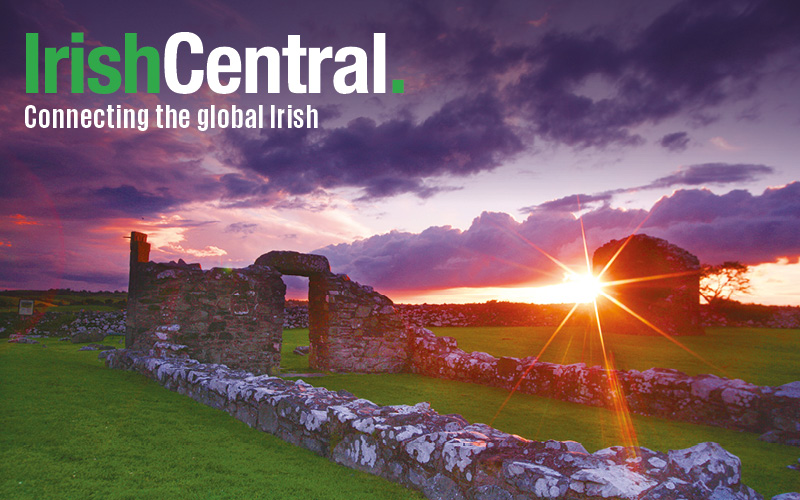He is the iconic patron saint of Ireland, the bringer of faith, the banisher of snakes and for many Ulster Loyalists he was the first Protestant settler on the Paddy’s green shamrock shore.
So on Saturday night in Armagh, the Protestants will parade for Patrick and the ‘Papists’ will protest.
How times have changed.
Today, Protestants in Northern Ireland are more insistent that they have a right to claim Patrick too as the founder of their Christian faith in Ireland. Indeed, some argue that his British origins and the fact that the Celtic Christian church structure he founded in Ireland stayed beyond the control of Rome for centuries, put him down as a staunch Protestant even before the Reformation.
They also point out that since the first New York parade involved Irish-born Redcoats in the colonial British Army, they have a proprietorial stake on its origins too.
St Patrick is believed to have come from Britain, first as a captive slave herding pigs and sheep at Slemish near the north coast, then as a Christian missionary to calm the savage pagan breast of his mortal flock.
He landed near Saul in Co. Down, not far from modern day Belfast, and began to convert the people. He founded his ecclesiastical centre in what is now Armagh City, near the ancient centre of power in Ulster, where the most Protestant cathedral now stands and he is laid to rest in the grounds of the Protestant cathedral in Downpatrick, also in Co. Down.
-------------------
Read more:
New Yorkers drinking more Guinness than ever and not just for St. Patrick’s Day
The curse of Cromwell upon you - Ireland’s history spelt out in insults
-------------------
Indeed, Patrick is believed to have concentrated his entire mission in the northern part of Ireland with only brief forays into the west for the rigours of the ‘Reek’ on Croagh Patrick.
Yet for many decades, particularly during the conflict in Northern Ireland, St Patrick and celebrations in his honour, were regarded as the cultural preserve of Irish Catholics and their diaspora, particularly in America.
The celebratory parades which have become such a huge feature of St Patrick’s Day in modern Ireland really only date from the 1970s and they are modelled on the New York event that started even more modestly away back in 1762. Even 40 years ago, March 17 was observed in Catholic Ireland as a Holy Day of obligation with Mass attendance and celebrations afterwards were more modest and cultural affairs.
Since the change to razzmatazz, Protestant participation in the new St Patrick’s Day was rare, particularly in the North where their big public celebrations were saved for July at the peak of the marching season.
Even in towns with organised parades, the moving force was often the local chapter of the Ancient Order of Hibernians and it was regarded as a partisan event with lots of Irish national flags and fervour.
So while the Queen of England presented her bowl of shamrocks in London to the Irish Guards regiment of the British Army and church-going Protestants often marked the day in religious services, there was little interest or motive for secular Protestants to get involved in the public parades or revelry.
But all that has changed. Meanwhile, the appeal of St Patrick’s has gone beyond partisan into the realm of good public relations with every community on the island of Ireland staking its claim to a part of the celebrations. Ulster Protestants have also latched on to the international commercial appeal of the patron saint and they want a part of that too.
So since the peace process took hold, parade organisers in Northern Ireland have gone to great lengths to remove what would be regarded as divisive political symbols from their events in order to create a more ‘welcoming’ atmosphere for Protestants to participate. Yet while there is green in abundance, there are also tricolours by the truckload at most venues. So many Protestants stay away.
In many Protestant communities, however, they have conducted their own cultural celebrations in their own time-honoured ways and often outside the glare of publicity which focuses on the more recognisable celebrations dominated by those from the Catholic National community. The local Protestant events include a traditional drumming contest in Lurgan and a couple of big marching band parades in the north coast town of Coleraine and in the small village of Killylea, Co. Armagh, near the Border.
These band parades form the recognised curtain raisers for the annual season for the tens of thousands of Protestants involved in Loyalist marching bands. Each band hosts its own parade, inviting in others for a big annual fund-raiser to keep them going. The season, which runs to mid-October, usually features several such band parades I different towns and villages each Friday and Saturday evening.
The Killylea village parade, only seven miles outside Armagh City, now comprises about 40 marching bands and it has already been regarded as the main Ulster Protestant celebration of St Patrick. This year, the venue has shifted into the local small city because it is the seat of St Patrick and can better accommodate the event.
The Parades Commission, an independent statutory agency, has given the go-ahead but nationalist/Republican politicians – particularly local Sinn Féin MP Conor Murphy – are incensed at what they see as a provocative intrusion on the celebrations. A meeting between the sides failed to resolve the difference.
Afterwards, a spokesman for the band said that the event will be ‘enjoyable and trouble free’ for all who wish to attend: ‘St Patrick is the patron saint of all of Ireland and all of its people. We fully respect the rights of others to celebrate according to their own traditions, and in turn would ask that they respect ours.’




Comments